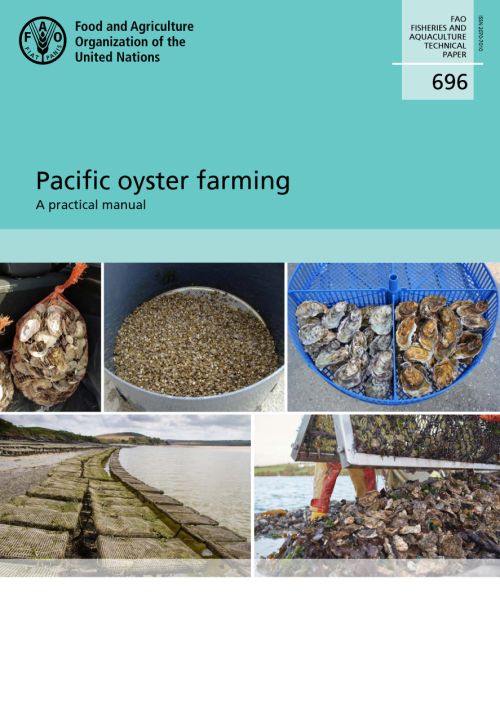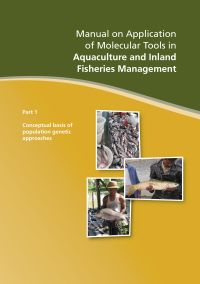Pacific oyster farming: A practical manual
8 June 2024 | Mark Mercer, Leorenzo Gennari, and Alessandro Lovatelli | 1799 Downloads | Better management practices, Molluscs (shellfish and other)
The purpose of this manual is to give the reader a foundation of practical knowledge regarding all aspects of Pacific oyster cultivation. It is targeted at new entrants to the market wishing to establish a farm, and existing operators who wish to develop their farms and explore new cultivation techniques. The methodologies described can be applied to both low-tech, low budget, small-scale farming operations and to high-tech, big budget, industrial-scale aquaculture production enterprises. This guide focuses on the functional expertise and technical equipment required to construct and manage an operational farm in the diverse environmental and physical locations in which they can be situated, from the initial stages of finding and selecting a suitable site, to the conclusion of the first production cycle and harvesting the crop.
The manual contains a brief introduction which describes the relevance of the species with regards to global aquaculture production figures and how it can form an important part of future food production strategies. Chapter 2 describes the anatomy and biology of Crassostrea gigas and gives an indication as to the environmental conditions in which the species thrives as well as the pathologies and predators that can result in poor health leading to potential mortalities. Quality assessment parameters are also discussed with regards to desirable attributes when selling final product into the market and what is necessary to be aware of when considering consumer safety.
Chapter 3 deals with all aspects of undertaking a survey of potential oyster farming sites and what data should be collected and examined in order to both assess a site’s suitability, but also which areas are best suited to different cultivation techniques. After this, Chapter 4 introduces the main farming techniques that will be described in detail in the following chapters, which includes off-bottom cultivation, on-bottom cultivation, and suspended cultivation, and also gives details of some of the most common cultivation equipment necessary to undertake these operations. The techniques and strategies necessary to procure seed oysters and how to develop them through the nursery stage are also introduced. This includes the basic principles of upwelling, which then leads into Chapter 5, which provides a detailed description of how to build and operate one particular example of a Floating Upwelling System (Flupsy) which is suitable for use in remote but sheltered conditions. A section on the best practices to be adopted when handling and transporting oysters is also included in this chapter.
Chapters 6, 7 and 8, constitute the main body of the manual and provide an in depth look into the three major cultivation techniques that this guide concentrates on: “Farming with trestles and bags in the intertidal zone”, “On-bottom cultivation in the intertidal or subtidal zone” and “Offshore long-line cultivation”. These represent three of the most common farming techniques adopted in a multitude of locations and, although other techniques are utilised, are responsible for the majority of oyster production around the globe. In each chapter, all aspects of the farming process are explored including site selection, farm design, farming practices and main constraints.
Finally, the manual finishes with some suggestions for further reading, a glossary and appendixes which includes information on food safety in regard to bivalve molluscs and some further details about cupped oyster production figures.
Creative Commons Attribution-NonCommercial-ShareAlike.

